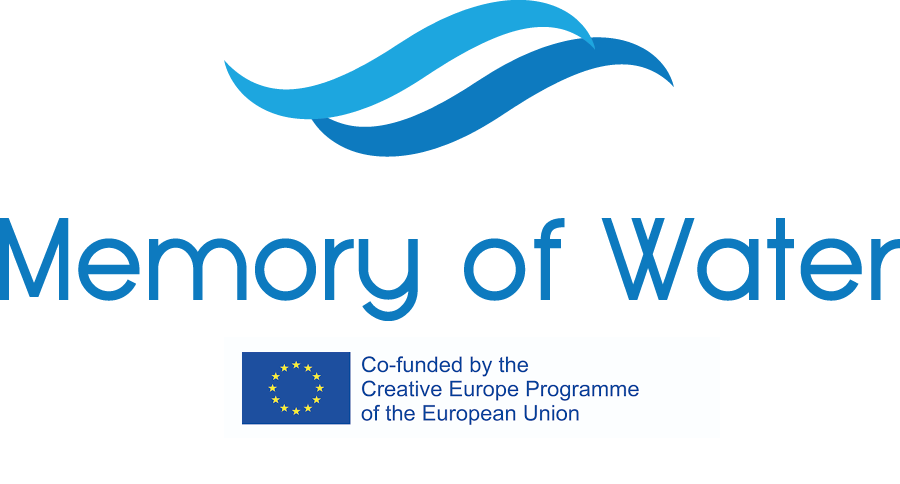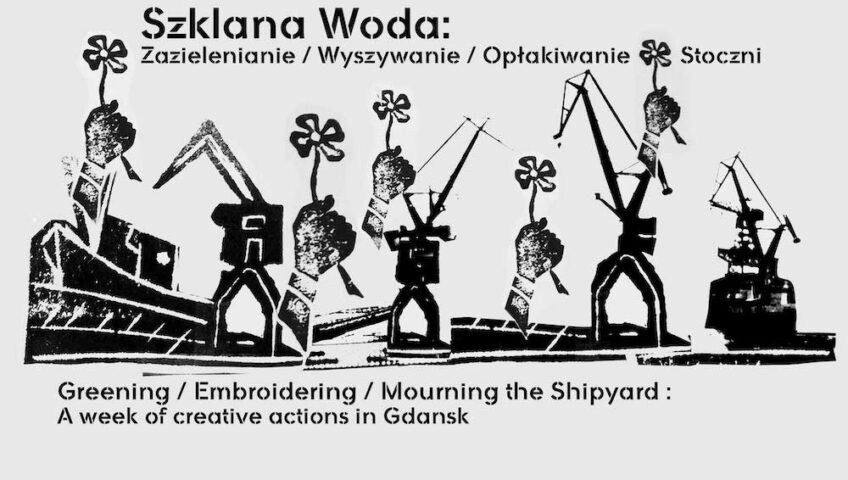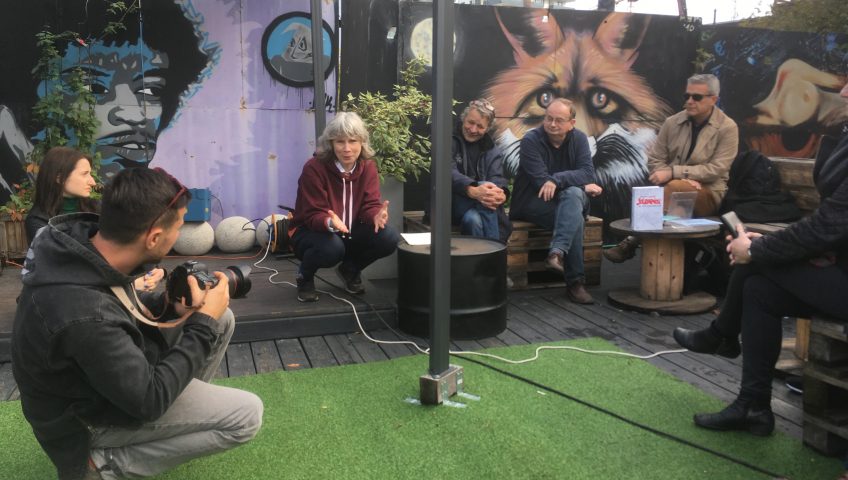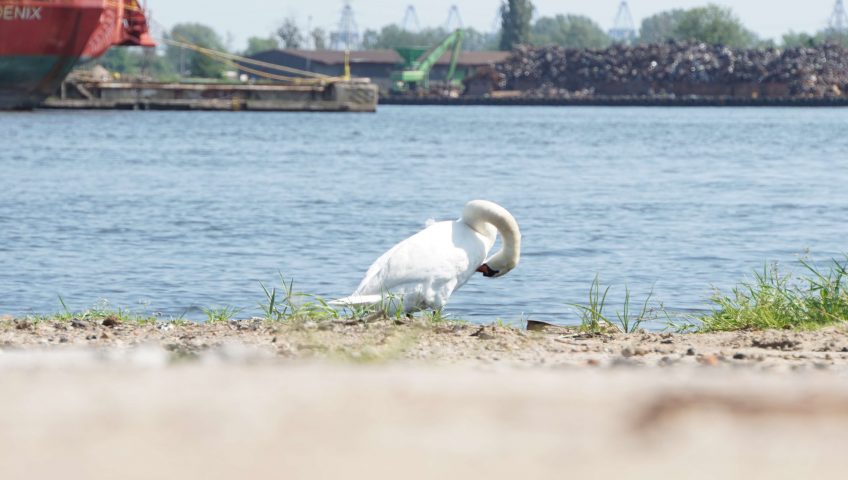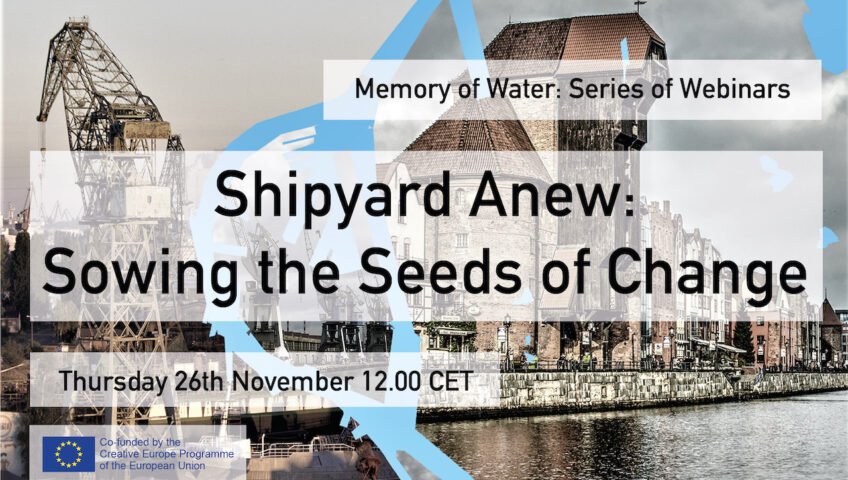
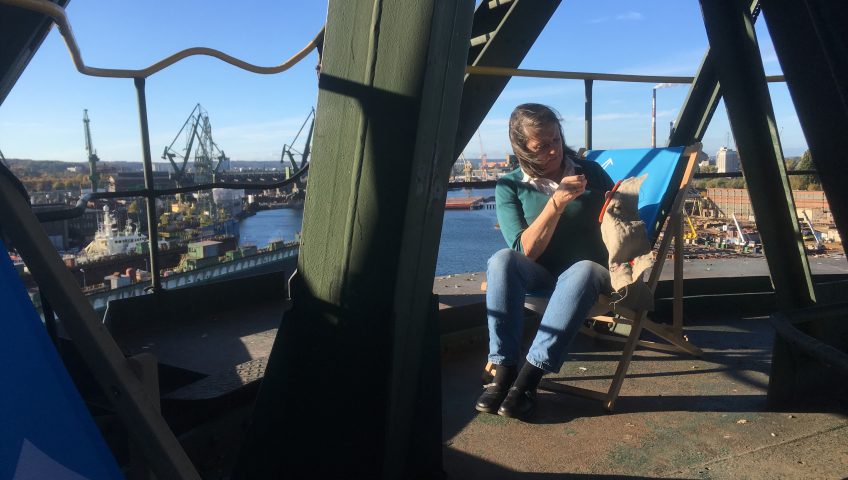
Reflection: Gdańsk through a Govan Lens
Some personal reflections from Govan based cultural planner, Liz Gardiner who is the Scottish partner on this Memory of Water project, is in charge of the communications for the project and is an artist turned academic in the Scottish context.
Whilst the production residency in Levadia had resonance for Govan in its links to textile making with its focus on the stories of local people and their ordinary traditions like washing cloth in the river, the Gdansk situation has more of a mirroring with Govan. Govan and Gdansk share histories in the development and decline of shipbuilding accompanied by protest. All of our six city artists reflected these aspects of Gdansk shipyard’s industrial history in their interventions.Read More
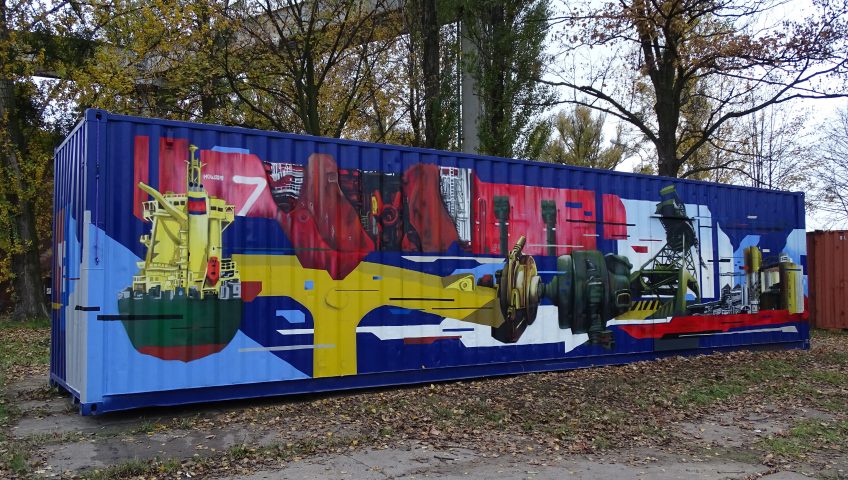
Reflection: Industrial Impressions
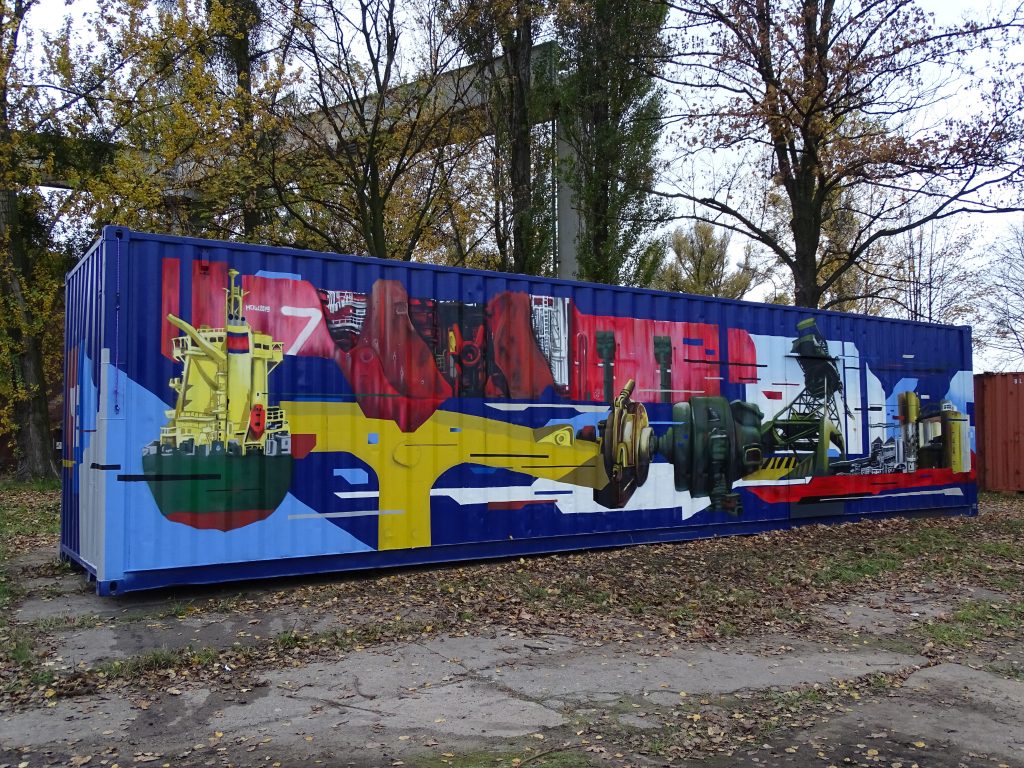
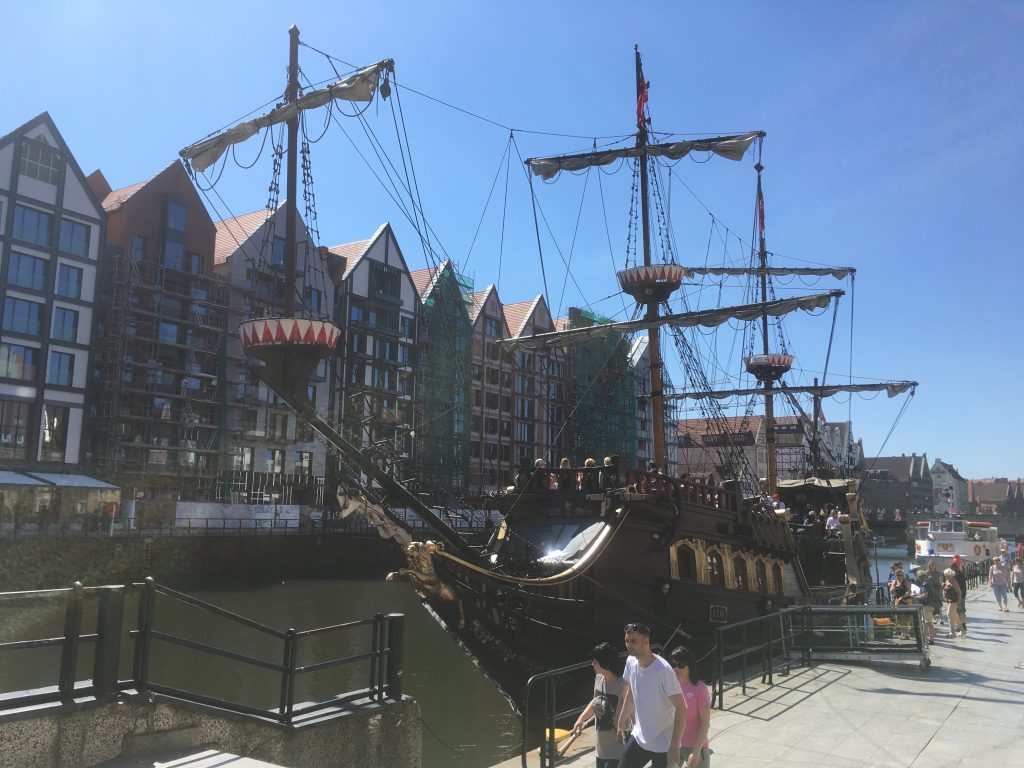
During our research residency in Gdańsk (June 2019), we decided to hop on this pirate ship to explore the shipyard from the water. This simple tourist attraction would turn out to be one the most inspiring moments ever for me. Besides the hundreds of pictures I took during the sailing along the waterfront, I was blown away, not only by the industrial aesthetic, but especially by the randomness of all the colours there. As an artist, that was so interesting for me, I immediately knew these wild colour combinations would play a dominant role in my planned artistic intervention.
Back home I made designs by mixing up fragments of my colourful documentation. Industrial Impressions began to form. The design was ready but finding a wall to paint it on was the biggest challenge. One wall was cancelled because of imminent demolition. Other walls were too vulnerable to vandalism. Just two weeks before the production residency, the Polish team proposed a shipping container as a canvas for the artwork. There are easier surfaces to paint on! The ribbed structure is far from ideal, especially for the linework. But the shipping container was a fantastic deep blue water colour and since shipping containers are so prominent in the shipyard, turning one into a piece of arts was the last piece to fit the puzzle.
Siegfried Vynck
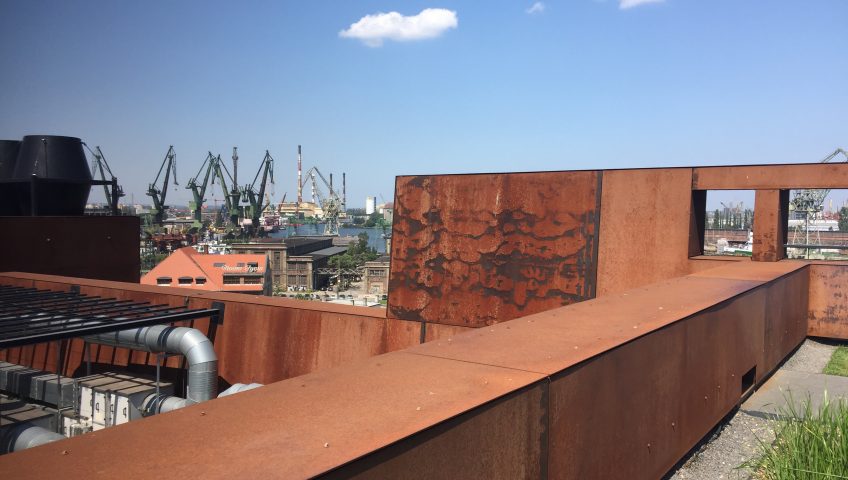
Reflection: Shipyard Footage
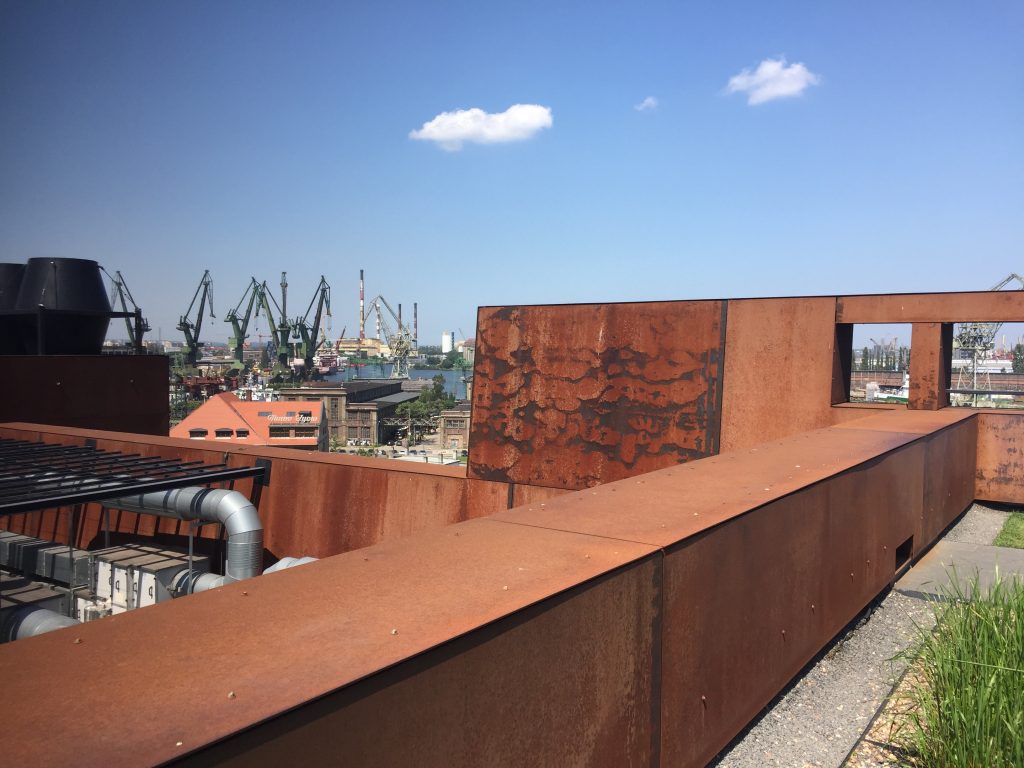
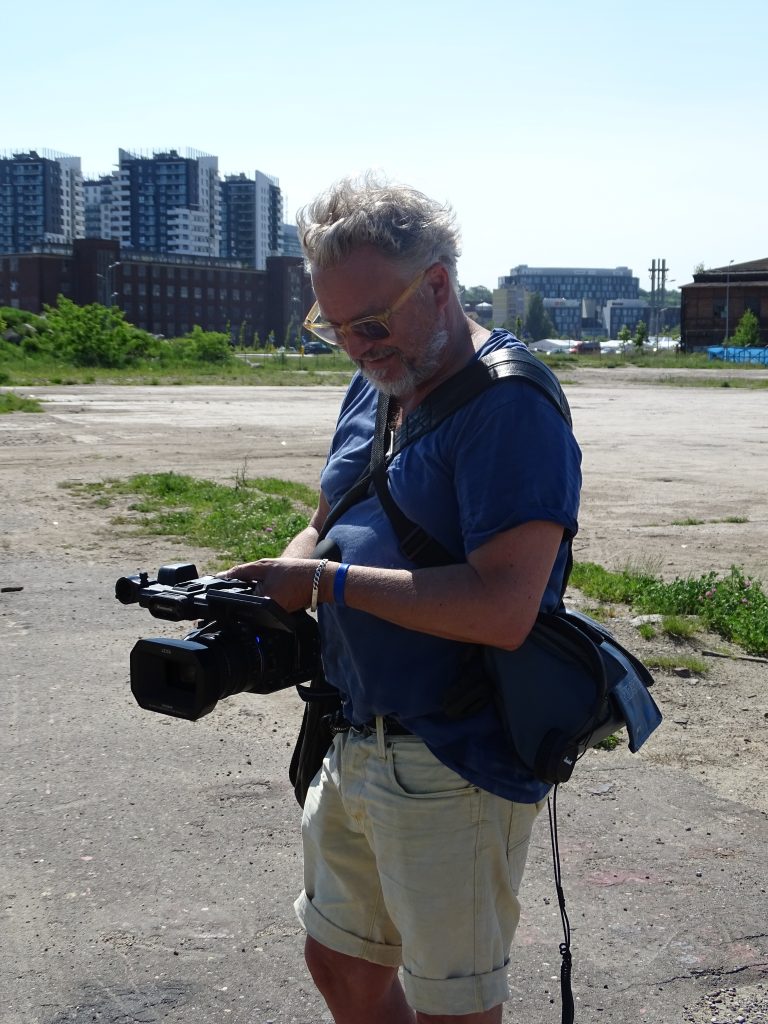
I continued my process of gathering footage to tell the story of our two-year journey of discovery together. This includes documenting the projects by the other Memory of Water artists. I am shooting one film in each city, so now I’m starting to edit the film for Gdańsk, but I will gradually stitch the shorter films together into a longer feature.
This was our second Memory of Water residency in Gdańsk, but I have been there several times before. I am always so glad to see the cranes in the skyline and the shipyard still working. The schedule was intense with many parallel events going on, but for me the hardest part was walking the vast shipyard with the camera equipment! My brief was to cover the artists’ process and activities throughout the week as well as the partners’ meetings.
I didn’t have a resolved visual concept before arriving in Gdańsk. The main focus, of course, was the thematics of the Memory of Water project. In Levadia, I started and finished in the River Erkyna itself. The camera (GoPro) emerged from the water to witness the actions, and then returned, submerged back in the river. In Gdańsk, I got the idea of walking – tracing my steps – through the Shipyard, up from the river, feet walking around the events, and then down into the water again at Martwa Wisła quay, where local artist, Czesław Podleśny, has installed a group of steel-robots sculptures at the water’s edge. There was a lot of walking! I had great assistance from local film-maker miss Anna Domanska over three days who helped me to cover parallel events. Each of the artists is working on separate projects so I’m trying to connect them spatially through the film for the audience.
At the same time, during this week and the whole experience in Gdańsk, I was collecting “good examples” of developing shipyard heritage. To show how culture and the art scene can grow and evolve with regeneration. I have the opposite experience unfortunately in Gothenburg, where the shipyard disappeared over ten years and nothing of the tangible or intangible heritage was saved.
There are many exciting things happening to protect and rethink shipyard heritage in Gdańsk, like with Stocznia Cesarka, for example. These sustainable approaches are here to stay! For one thing, the shipyard area is now more accessible for locals and tourists. I think a mobile application with archival pictures, maps and guided tours would be a popular idea.
Jonas Myrstrand
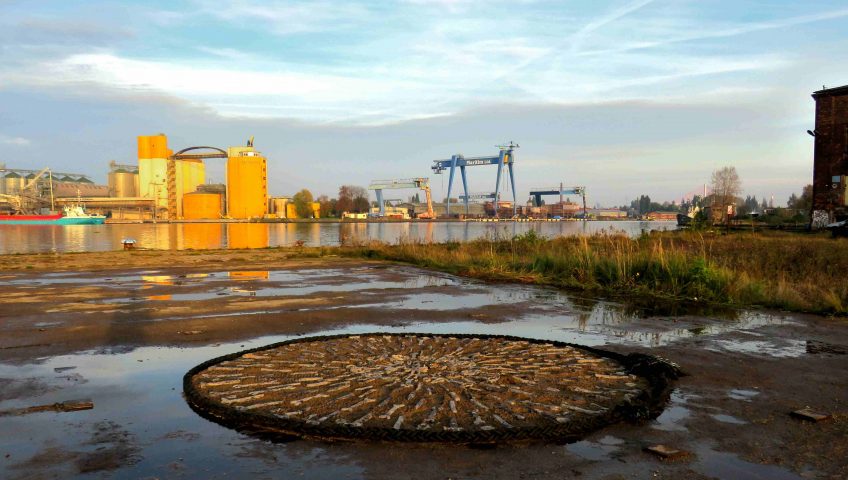
Reflection: Seed Change
I wasn’t sure what to expect at Stocznia Gdańska. From the historical images I’d seen of the cranes, the industry and the crowds during the events of the solidarity movement, I could imagine the shouting, the clanging of iron, workers and machines noisily building gigantic ships to travel the globe.Read More
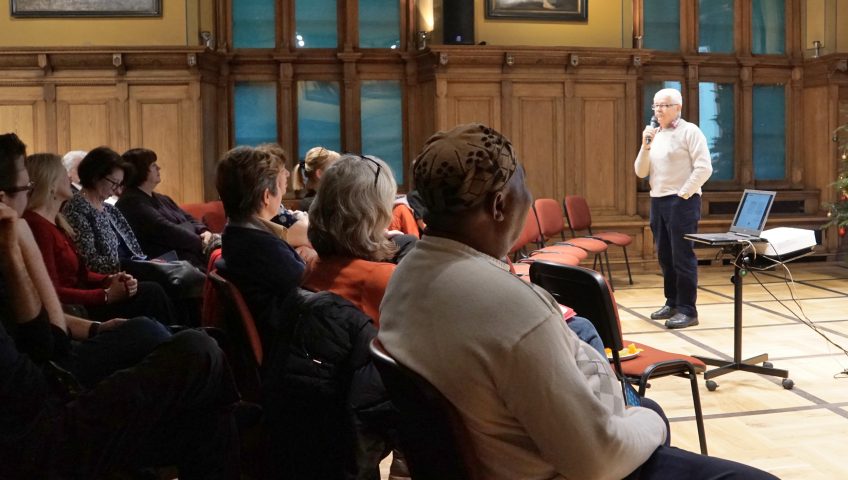
City Lab: Dreams to Fulfill in Gdańsk
MEMORY OF WATER // SHIPYARD A/NEW
CITY LAB: DREAMS TO FULFILL
18 OCTOBER 2019 r. / Piątek
Old Towna Hall, 33/35 Korzenna Street, Gdańsk
Part 1: Heritage For Future (Session in Polish except for*)
10:00 Official Opening and Welcoming of Guests
Introduction:
- Lawrence Ugwu, Director, The Baltic Sea Cultural Centre in Gdańsk,
- Iwona Preis, Intercult, Stockholm, Coordinator, European Project “Memory of Water”
- Agnieszka Wołodźko, Curator of Art Residencies, MoW in Gdańsk
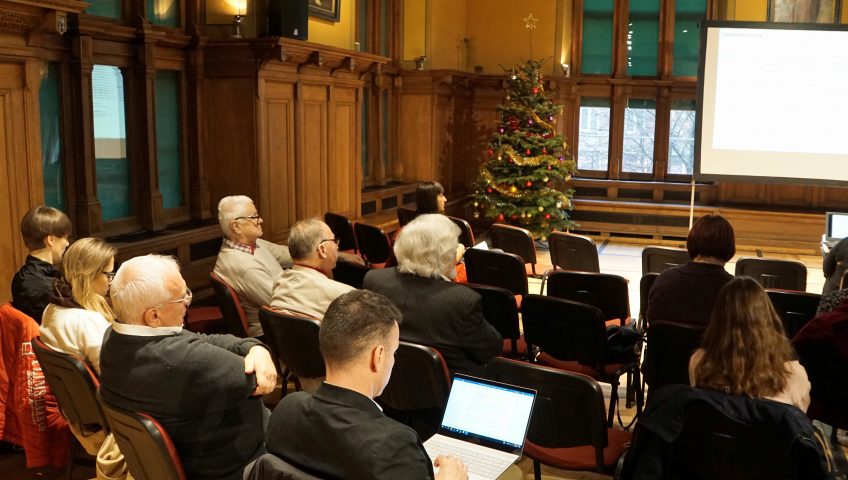
City Lab: Shipyard Anew
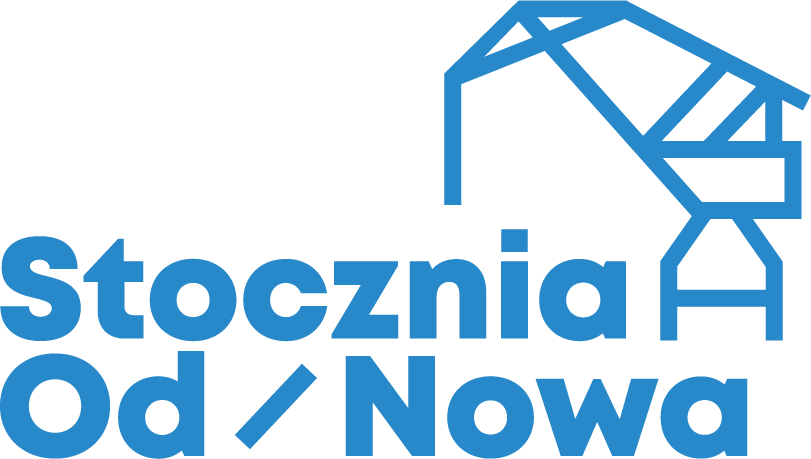
On 17 December in Gdańsk we summed up the project Memory of Water EU Creative Europe Shipyard aNew. We have collected and presented proposals for development of post-shipyard areas in Gdańsk – our common “dreams to fulfill”.
Dreams to fulfilRead More
